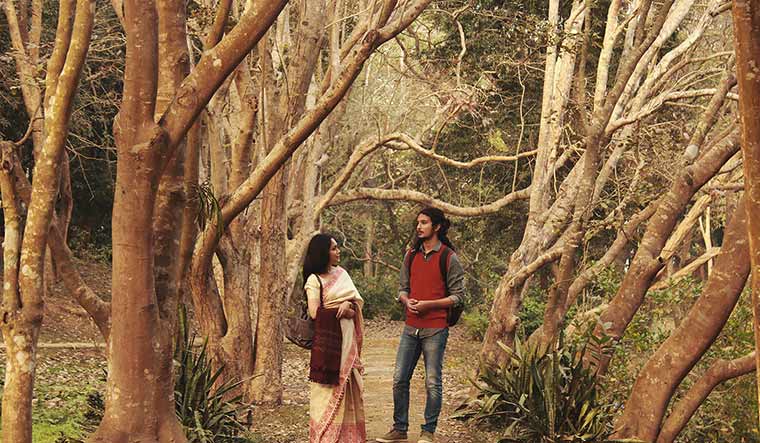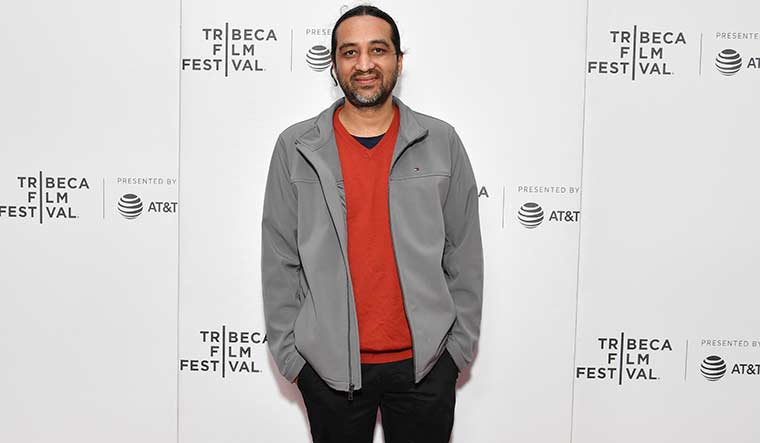ONCE, WHEN Bhaskar Hazarika saw a couple at a food court, completely engrossed in their meal, it made him think about how food connects people. This idea became Aamis (Ravening), his second Assamese film after the national award-winning Kothanodi.
In Aamis, Nirmali (Lima Das), a married paediatrician, and Sumon (Arghadeep Baruah), a doctoral researcher studying meat eating in the northeast, are drawn to each other through food. A brave and subversive film, Aamis begins by exploring tender love but becomes progressively complex as it starts dealing with the horrors of the politics of food. After being shown at international festivals, the film will be screened in the India Gold section (competition category with nine more titles) at the Jio MAMI Mumbai Film Festival with Star, which begins on October 17.
“That observation in the food court was the trigger for this whole chain of thought about notions of right and wrong, taboo and debauchery, love and lust, and the larger issue of a complete lack of empathy and understanding for those who have sinned,” Hazarika says in an email interview. “Nobody is born a sinner, and therefore to react with hatred and anger towards people who have committed a sin is incorrect.”
The film is set in Guwahati, and is about its food, its history and the tradition of eating different kinds of meat. The dazzling colour palette draws you in, and the questions raised keep you hooked. Can eating any food be a sin? And, can you hate someone who has sinned? “Hate the sin, not the sinner, as a wise woman once said,” says Hazarika. “And she said it because we are all capable of sinning.”
Kothanodi, Hazarika’s directorial debut, was inspired by folk stories of Assam, and also ventured into an idiosyncratic world that pushed you to think. But Aamis takes it much further, even making you wonder if this was the film he had in mind when he began. “Overall, I can confirm that the film turned out as visualised, except that its tone and texture became gentler and more tender than originally envisaged,” he says. “Much of it has to do with the two beautiful souls who played the lead pair.”
Hazarika weaves the personal and the political to engage with the repression—changing eating habits by force, in this case—that is slowly creeping into the mainstream.
Though money was hard to come by for his first film, and he had to crowdfund it, he continues to dabble in themes that may not be politically or culturally palatable. Does it ever become a concern? “Even the most benign nursery rhymes or the most cringeworthy Bollywood films [are political],” he says. “But Aamis’s creative impulse was not political. It was never about striking one for the meat eaters in a country that is suddenly in the grip of state-sponsored vegetarianism. All I wanted to do was tell a story about two chaste lovers, using a trope that is provocative and disruptive.”
The biggest compliment for Aamis could be that it does not leave you for days after watching. For me, a vegetarian since birth, it was difficult to embrace the theme. But, for the love of the craft, you do. I still have concerns about family members who eat meat, and I wondered if Hazarika had had any extreme reactions to the film. “Typically, our reactions to films (or any form of art) are driven by a mixture of our beliefs and our prejudices. While there have been several people who have been put off by the third act of the film, there are always people out there who ‘get’ the film. In our screenings, I have been fortunate enough to meet more of the latter than the former,” he says, with a disclaimer, “But that is perhaps because the film has mostly been screened internationally so far. All bets are off in India. I hear these days they beat you up out here if they do not like your art.”



